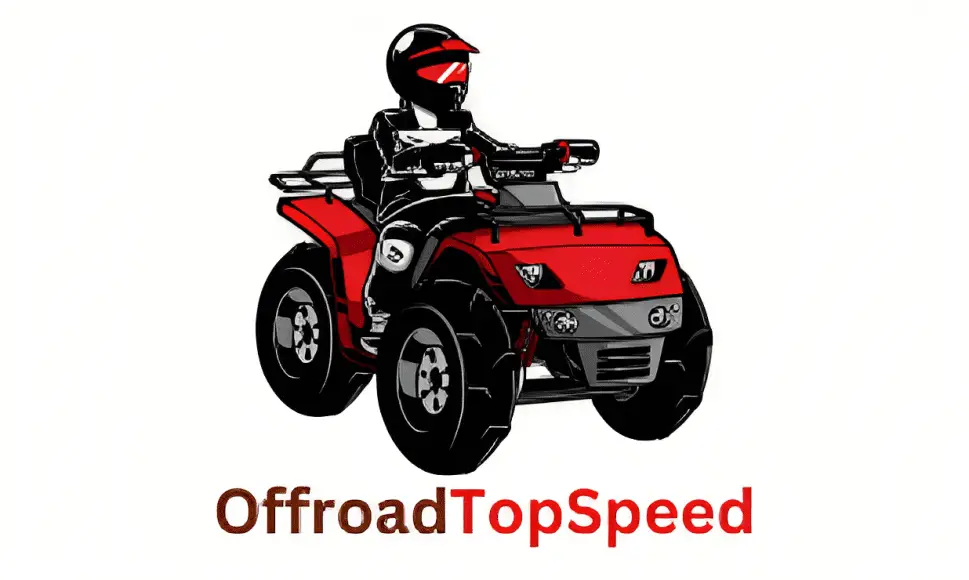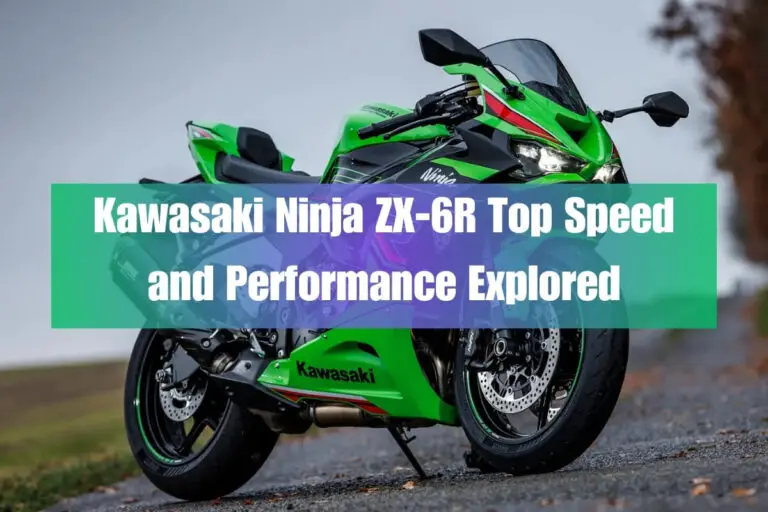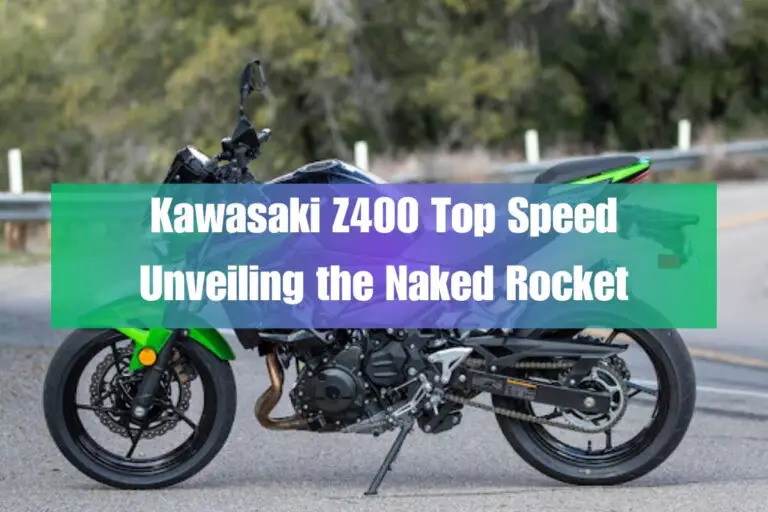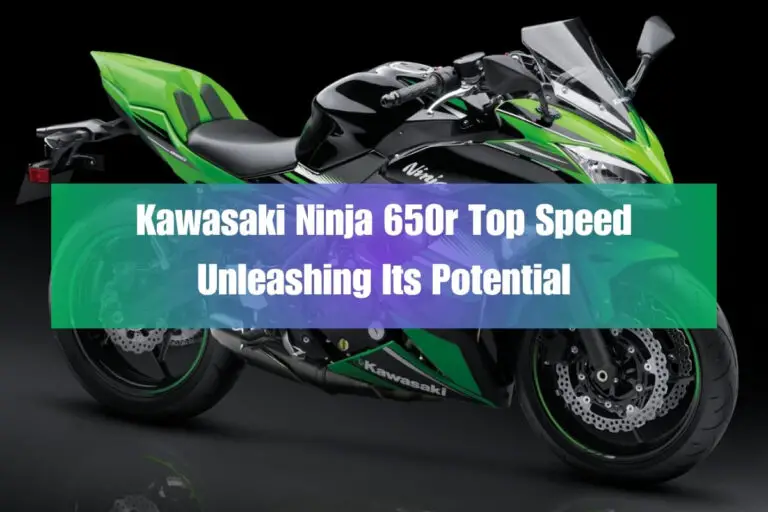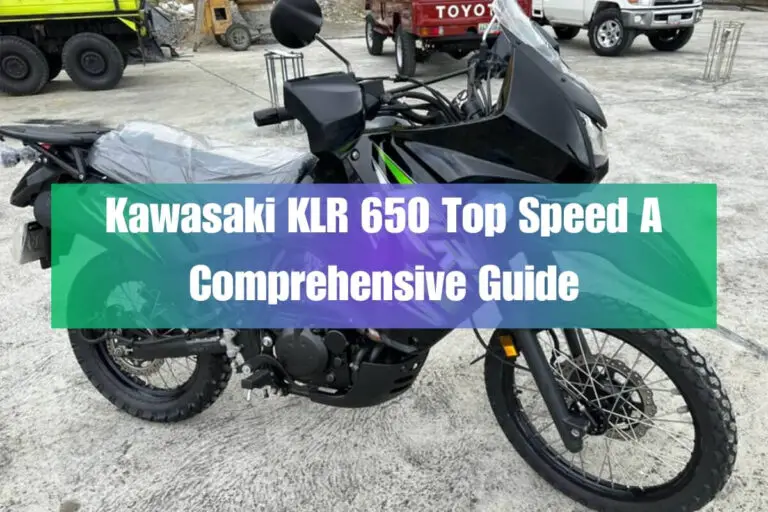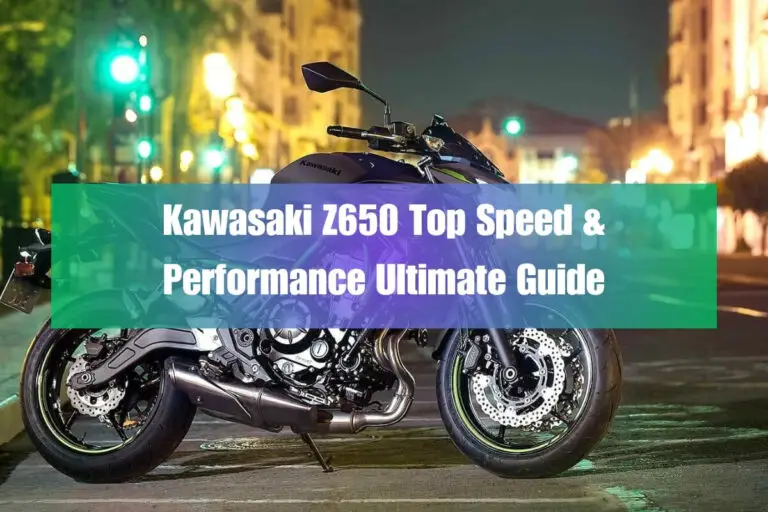Kawasaki Ninja 250 Top Speed: The Complete Guide
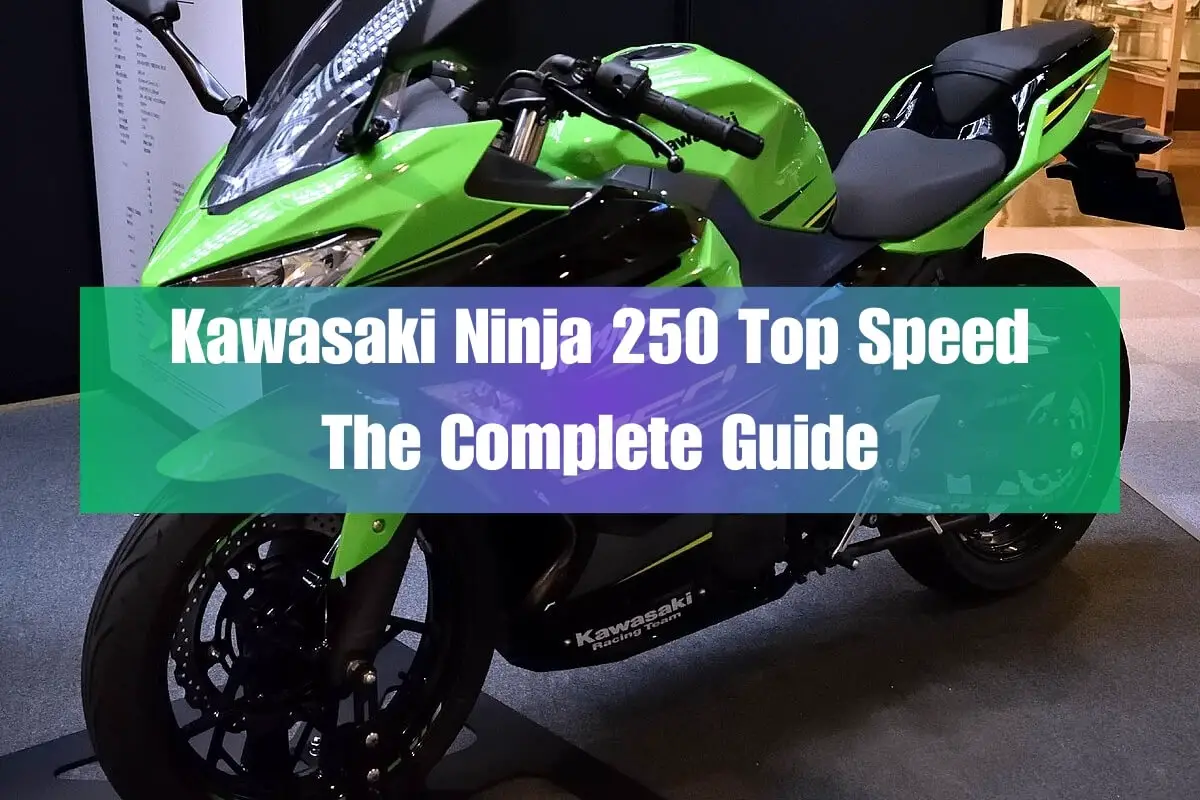
Are you curious about the top speed capabilities of the popular Kawasaki Ninja 250 motorcycle? As a compact and lightweight sportbike, the Ninja 250 promises an exhilarating riding experience, but just how fast can it go? This in-depth analysis, will dive deep into the Kawasaki Ninja 250’s top speed, performance figures, technical specifications, and more.
Kawasaki Ninja 250: A Compact Powerhouse
The Kawasaki Ninja 250 is a beloved entry-level sportbike that has been a staple in the Japanese manufacturer’s lineup for years. Known for its nimble handling, fuel efficiency, and user-friendly nature, the Ninja 250 has been a popular choice among beginner riders and urban commuters alike.
For the 2024 model year, Kawasaki has introduced some updates to the Ninja 250 series. While the specifications remain largely unchanged, the KRT (Kawasaki Racing Team) Edition now features a refreshed logo and a striking Lime Green and Ebony color scheme, further enhancing its sporty appeal.
Pricing and Availability
The 2024 Kawasaki Ninja 250 is scheduled to hit the market on September 15, 2023, with a manufacturer’s suggested retail price (MSRP) of approximately $4,840 USD. This price point makes the Ninja 250 an attractive option for those seeking an affordable and capable entry into the world of sportbikes.
Key Features and Specifications
Before diving into the top speed discussion, let’s briefly explore some of the key features and specifications that make the Kawasaki Ninja 250 a compelling choice:
- Engine: Liquid-cooled, 249cc parallel-twin engine with a maximum output of 35 horsepower at 12,500 rpm and 16.6 lb-ft of torque at 10,500 rpm.
- Transmission: 6-speed return transmission with an assist and slipper clutch for smoother downshifts.
- Dimensions: Overall length of 1,990 mm, width of 710 mm, height of 1,125 mm, and a wheelbase of 1,370 mm.
- Weight: Curb weight of 166 kg (366 lbs), making it relatively lightweight for its class.
- Suspension and Brakes: Telescopic front fork and rear mono-shock suspension, paired with disc brakes front and rear.
- Fuel Capacity: 14-liter fuel tank, contributing to the bike’s impressive fuel efficiency.
With its compact size, lightweight construction, and capable parallel-twin engine, the Ninja 250 promises an engaging and responsive riding experience, but how does it fare when it comes to outright top speed?
Ninja 250’s Top Speed Unveiled
According to Kawasaki’s official specifications, the Ninja 250 has a claimed top speed of 110 miles per hour (177 km/h). However, real-world testing and owner experiences suggest that the actual top speed may vary slightly depending on factors such as rider weight, wind conditions, and terrain.
Many owners and reviewers report achieving top speeds ranging from 95 to 105 mph (153 to 169 km/h) on the Ninja 250. It’s important to note that these figures are typically achieved on a flat, straight surface with optimal conditions.
When compared to its competitors in the 250cc class, the Ninja 250’s top speed is on par with bikes like the Honda CBR250R and the KTM RC 390. However, it’s worth noting that the Ninja 250 is primarily designed for urban commuting and beginner-friendly riding, rather than outright speed performance.
Performance Breakdown: Acceleration, Handling, and Brakes
While top speed is an important metric, it’s not the only factor that contributes to the overall performance of a motorcycle. Let’s take a closer look at the Ninja 250’s acceleration, handling, and braking capabilities:
Acceleration
The Ninja 250’s liquid-cooled, parallel-twin engine provides decent acceleration for its displacement. Owners report 0-60 mph (0-96 km/h) times in the range of 6 to 7 seconds, which is respectable for a 250cc bike. However, it’s important to note that the Ninja 250’s acceleration prowess is best experienced in the lower rev range, with performance tapering off as you approach the engine’s redline.
Handling and Cornering
One of the standout features of the Kawasaki Ninja 250 is its nimble handling and responsive cornering capabilities. Thanks to its lightweight chassis and compact dimensions, the Ninja 250 is incredibly flickable and easy to maneuver, making it an absolute joy to navigate through tight city streets and twisty backroads.
The bike’s suspension setup, consisting of a telescopic front fork and rear mono-shock, provides a balanced ride quality that can handle spirited cornering while still offering a comfortable ride for daily commuting.
Braking Performance
Stopping power on the Ninja 250 is provided by disc brakes front and rear, which offer adequate stopping force for the bike’s performance envelope. While not class-leading, the brakes are responsive and provide sufficient bite for everyday riding scenarios.
It’s worth noting that the Ninja 250’s braking performance can be further enhanced with the addition of high-quality brake pads and braided steel brake lines, which can improve overall braking feel and modulation.
Technical Specifications: A Closer Look
To better understand the Kawasaki Ninja 250’s capabilities, let’s delve into its technical specifications in more detail:
| Specification | Details |
|---|---|
| Engine | Liquid-cooled, 249cc parallel-twin, DOHC, 4-valve |
| Maximum Power | 35 hp @ 12,500 rpm |
| Maximum Torque | 16.6 lb-ft @ 10,500 rpm |
| Transmission | 6-speed return with assist and slipper clutch |
| Overall Length | 1,990 mm (78.3 in) |
| Overall Width | 710 mm (28.0 in) |
| Overall Height | 1,125 mm (44.3 in) |
| Wheelbase | 1,370 mm (54.0 in) |
| Seat Height | 795 mm (31.3 in) |
| Curb Weight | 166 kg (366 lbs) |
| Fuel Capacity | 14 liters (3.7 gallons) |
| Front Suspension | Telescopic fork |
| Rear Suspension | Mono-shock |
| Front Brakes | Disc |
| Rear Brakes | Disc |
| Front Tire | 110/70-17 |
| Rear Tire | 140/70-17 |
These specifications highlight the Ninja 250’s compact dimensions, lightweight construction, and capable parallel-twin engine, which contribute to its nimble handling and respectable performance within its class.
What Owners Say: The Real-World Experience
While specifications and performance figures are important, nothing beats the real-world experiences of actual Kawasaki Ninja 250 owners. Let’s take a look at what they have to say:
Positive Reviews
“The Ninja 250 is an absolute blast to ride! It’s lightweight and flickable, making it a breeze to navigate through city traffic. The parallel-twin engine has enough punch to keep things exciting, and the fuel efficiency is fantastic.” – John D., California
“As a beginner rider, the Ninja 250 has been the perfect bike to learn on. It’s forgiving yet still provides enough performance to keep me entertained. The handling is fantastic, and the bike inspires confidence in corners.” – Sarah M., New York
Negative Reviews
“While the Ninja 250 is a great bike overall, I found the suspension to be a bit harsh, especially over rough road surfaces. An upgrade to better suspension components could make a big difference.” – Mike T., Texas
“The lack of adjustability in the suspension and brakes can be limiting, especially for more experienced riders who want to fine-tune the bike’s performance to their preferences.” – Alex R., Florida
Common Complaints and Praise
Among the common complaints from Ninja 250 owners, the suspension setup and lack of adjustability seem to be recurring themes. While the suspension works well for everyday riding, some owners find it to be too firm or lacking in damping control, especially when pushing the bike harder on twisty roads or rough surfaces.
On the flip side, owners consistently praise the Ninja 250’s nimble handling, user-friendly nature, and impressive fuel efficiency. The lightweight and compact design, paired with the smooth and responsive parallel-twin engine, make the Ninja 250 a joy to ride in urban environments and on winding backroads.
Comparison: Stacking Up Against the Competition
To better understand the Kawasaki Ninja 250’s performance and capabilities, it’s helpful to compare it against some of its closest competitors in the 250cc class:
Top Speed Comparison
- Kawasaki Ninja 250: 95-110 mph (153-177 km/h)
- Honda CBR250R: 90-100 mph (145-161 km/h)
- KTM RC 390: 105-115 mph (169-185 km/h)
- Yamaha R3: 110-115 mph (177-185 km/h)
As you can see, the Ninja 250’s top speed is on par with bikes like the Honda CBR250R, while slightly trailing behind the more powerful KTM RC 390 and Yamaha R3.
Feature Comparison
When it comes to features and specifications, the Ninja 250 holds its own against the competition. It offers a user-friendly design, lightweight chassis, and a capable parallel-twin engine that provides a balanced blend of performance and fuel efficiency.
However, some competitors like the KTM RC 390 and Yamaha R3 offer more advanced suspension components, higher power outputs, and more modern electronics, catering to riders who prioritize outright performance over beginner-friendliness.
Modifications and Upgrades: Unleashing the Ninja’s Potential
While the Kawasaki Ninja 250 is a capable and well-rounded sportbike straight from the factory, many owners seek to unlock its full potential through various modifications and upgrades.
Best Modifications to Increase Top Speed
- High-flow air filter: Replacing the stock air filter with a high-flow aftermarket unit can improve airflow and potentially increase top-end power and speed.
- Aftermarket exhaust system: A free-flowing aftermarket exhaust can help reduce back pressure and extract more power from the engine, potentially increasing top speed.
- ECU tuning: Remapping the engine control unit (ECU) with a performance tune can optimize the fuel and ignition maps, unlocking additional power and top speed.
Recommended Upgrades for Performance and Comfort
In addition to top speed enhancements, other popular upgrades for the Ninja 250 include:
- Suspension upgrades: Installing aftermarket shock absorbers and fork internals can improve damping control and ride quality.
- Brake upgrades: Upgrading to braided steel brake lines and high-performance brake pads can improve braking feel and stopping power.
- Ergonomic enhancements: Adjustable rearsets, seats, and handlebars can improve rider comfort and control over the bike.
It’s important to note that modifications should be carried out responsibly and within legal limits, as excessive changes can impact the bike’s safety and reliability. Consulting with experienced mechanics and following manufacturer guidelines is highly recommended.
Pros and Cons: Weighing the Kawasaki Ninja 250
Like any motorcycle, the Kawasaki Ninja 250 has its fair share of pros and cons. Let’s take a look at some of the key advantages and disadvantages of this popular sportbike:
Advantages
- Beginner-friendly and forgiving nature, making it an excellent choice for new riders.
- Lightweight and nimble handling, perfect for urban environments and twisty roads.
- Impressive fuel efficiency, resulting in lower operating costs.
- Affordable price point, making it an accessible entry into the sportbike world.
- User-friendly ergonomics and controls, with a comfortable riding position.
- Reliable and low-maintenance parallel-twin engine.
Disadvantages
- Limited top speed and performance compared to larger displacement bikes.
- Lack of adjustability in the suspension and brakes, which can be limiting for more experienced riders.
- Dated styling and design, which may not appeal to those seeking a more modern look.
- Lack of advanced electronics and rider aids found on more premium models.
- Harsh suspension setup, which can be uncomfortable on rough roads.
While the Ninja 250 excels in areas like beginner-friendliness, affordability, and fuel efficiency, it does have its limitations in terms of outright performance and adjustability. Prospective buyers should carefully consider their riding needs and priorities before making a purchase decision.
Alternatives to Consider
If the Kawasaki Ninja 250 doesn’t quite fit your needs or preferences, there are several other alternatives worth considering in the same class:
- Honda CBR300R: A slightly larger and more powerful option with a 286cc single-cylinder engine and modern styling.
- KTM RC 390: A higher-performance choice with a 373cc single-cylinder engine, advanced suspension, and sportier ergonomics.
- Yamaha R3: A popular choice with a 321cc parallel-twin engine, offering more power and modern features than the Ninja 250.
- Kawasaki Ninja 400: A step up in displacement and performance from the Ninja 250, with a 399cc parallel-twin engine and updated styling.
Depending on your budget, performance requirements, and personal preferences, these alternatives may provide a better fit for your riding needs.
Who’s It For? Identifying the Ideal Ninja 250 Rider
While the Kawasaki Ninja 250 is a versatile and capable motorcycle, it’s important to understand who this bike is ideally suited for:
Who Should Buy the Ninja 250?
- Beginner riders: The Ninja 250’s forgiving nature, lightweight handling, and user-friendly design make it an excellent choice for those just starting out in the world of motorcycling.
- Urban commuters: The bike’s compact dimensions, agility, and fuel efficiency make it a practical choice for navigating city traffic and daily commuting.
- Riders on a budget: The Ninja 250’s affordable price point and lower operating costs make it an attractive option for budget-conscious buyers.
Who Should Not Buy the Ninja 250?
- Experienced riders seeking high performance: While capable, the Ninja 250’s limited top speed and power may leave experienced riders wanting more.
- Touring enthusiasts: The bike’s compact size and lack of wind protection make it less suitable for long-distance touring or highway cruising.
- Track day enthusiasts: Although nimble, the Ninja 250’s performance limitations may not be ideal for those looking to push their limits on the racetrack.
Ideal Use Cases and Riding Styles
The Kawasaki Ninja 250 shines in urban environments, where its compact size, agility, and fuel efficiency truly come into play. It’s also a great choice for exploring twisty backroads and gaining confidence as a beginner rider. However, for those seeking high-speed thrills or long-distance touring capabilities, the Ninja 250 may not be the best fit.
Troubleshooting: Common Issues and Maintenance Tips
Like any motorcycle, the Kawasaki Ninja 250 may experience some common issues and require regular maintenance to keep it running smoothly. Here are some common problems and maintenance tips to keep in mind:
Common Issues and Their Fixes
- Stalling or rough idling: This can often be resolved by cleaning or replacing the fuel injectors, adjusting the idle speed, or checking for vacuum leaks.
- Clutch slipping: A slipping clutch may indicate the need for a clutch adjustment or, in more severe cases, a clutch replacement.
- Suspension issues: Harsh or bouncy suspension can sometimes be improved by adjusting the preload settings or replacing worn-out suspension components.
Maintenance Tips and Tricks
- Regular oil changes: Follow the manufacturer’s recommended intervals for oil changes to ensure optimal engine performance and longevity.
- Tire pressure checks: Maintaining proper tire pressure can improve handling, traction, and fuel efficiency.
- Chain lubrication and adjustment: Keeping the drive chain properly lubricated and adjusted can prevent premature wear and ensure smooth power transfer to the rear wheel.
- Brake fluid changes: Regularly flushing and replacing the brake fluid can maintain optimal braking performance and prevent contamination or moisture buildup.
- Air filter cleaning/replacement: A clean air filter ensures proper airflow and fuel efficiency, while a dirty or clogged filter can negatively impact performance.
- Spark plug inspection/replacement: Inspecting and replacing spark plugs at the recommended intervals can prevent misfiring and promote efficient combustion.
- Battery maintenance: Checking battery connections, cleaning terminals, and ensuring proper charging can prevent electrical issues and ensure reliable starting.
- Coolant level and condition: Monitoring the coolant level and condition can prevent overheating and ensure proper engine cooling.
By following these maintenance tips and addressing any issues promptly, Ninja 250 owners can ensure their bikes remain in top condition, providing reliable and enjoyable performance for years to come.
Final Thoughts and Recommendation
The Kawasaki Ninja 250 is a well-rounded and capable entry-level sportbike that offers an exciting blend of performance, agility, and affordability. While its top speed may not match larger displacement bikes, the Ninja 250’s nimble handling, user-friendly nature, and impressive fuel efficiency make it an excellent choice for beginner riders and urban commuters alike.
If you’re in the market for a fun, practical, and budget-friendly motorcycle to learn on or navigate city streets, the Ninja 250 is definitely worth considering. However, if you’re an experienced rider seeking outright performance or long-distance touring capabilities, you may want to explore alternatives with larger engines and more advanced features.
Ultimately, the decision to purchase a Kawasaki Ninja 250 comes down to your specific riding needs, preferences, and budget. By carefully weighing the pros and cons, considering the modifications and upgrades available, and understanding the bike’s strengths and limitations, you can make an informed decision that aligns with your desired riding experience.
Remember, the true joy of motorcycling lies in finding the right bike that resonates with your riding style and enables you to fully embrace the exhilaration of the open road. Whether the Ninja 250 is your perfect match or serves as a stepping stone to larger machines, it’s sure to leave a lasting impression and provide countless memorable moments on two wheels.
